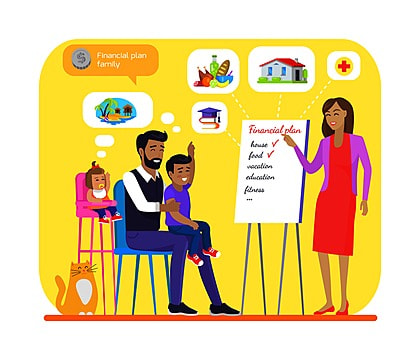
Teaching your children about budgeting is a valuable life lesson that will shape their financial decisions for years. In today’s consumer-driven society, it’s crucial to instill in them the importance of managing money responsibly. By introducing budgeting early on, you empower your children to make informed financial choices, set goals, and develop a healthy relationship with money.
Making your children aware of budgeting not only prepares them for financial independence but also helps them understand the value of money, the difference between needs and wants, and the satisfaction of reaching savings goals. With your guidance, they will develop money management habits that will serve them well throughout their lives. So, let’s dive in and discover effective methods to teach your children the foundations of budgeting, setting them on a path toward financial success.
1. Lead by Example

Children learn best by observing their parents’ actions. Start by setting a good example of responsible money management. Discuss your family budget openly, explaining the purpose of different expenses and the importance of saving. Show them how you track expenses, set financial goals, and make thoughtful spending decisions. When children see their parents being mindful of money, they are more likely to adopt similar habits.
2. Make Money Management a Fun Learning Experience

Learning about budgeting doesn’t have to be boring! Transform it into a fun and interactive experience for your children. Introduce them to the concept of earning money through simple chores or tasks around the house. Set up a system where they can track their earnings and savings visually, such as a jar or a piggy bank. Encourage them to set goals for their savings, such as buying a toy or saving for a special outing. As they reach their goals, celebrate their achievements together. This approach makes money management more tangible and enjoyable for children.
3. Teach the Difference Between Needs and Wants

One crucial aspect of budgeting is distinguishing between needs and wants. Explain to your children that needs are essential things they require for survival, such as food, clothing, and shelter. Wants, on the other hand, are things they desire but can live without. Encourage them to prioritize needs over wants when making spending decisions. You can involve them in creating a family budget, allocating funds for necessities first and leaving a portion for discretionary expenses. This practice helps children develop critical thinking skills and make informed choices about their spending.
4. Introduce Saving and Goal Setting

Saving is an essential part of budgeting. Teach your children the value of saving money for future goals. Help them set realistic savings targets and guide them in making a plan to achieve those goals. Encourage them to save a portion of their earnings or gifts they receive. You can offer to match their savings to motivate them further. Introduce the concept of delayed gratification, explaining that waiting to purchase something they want can be more rewarding in the long run. By teaching your children the discipline of saving, you instill a sense of financial responsibility and a habit that will serve them well throughout their lives.
Teaching your children about budgeting is an investment in their future financial well-being. By leading by example, making money management fun, and teaching them to prioritize needs over wants, you lay the foundation for responsible financial habits. Additionally, introducing the concepts of saving and goal setting helps them develop important skills for managing their finances. Remember, the earlier you start teaching these skills, the better prepared your children will be to navigate the complexities of money management as adults.
To learn more about finances, keep reading!







